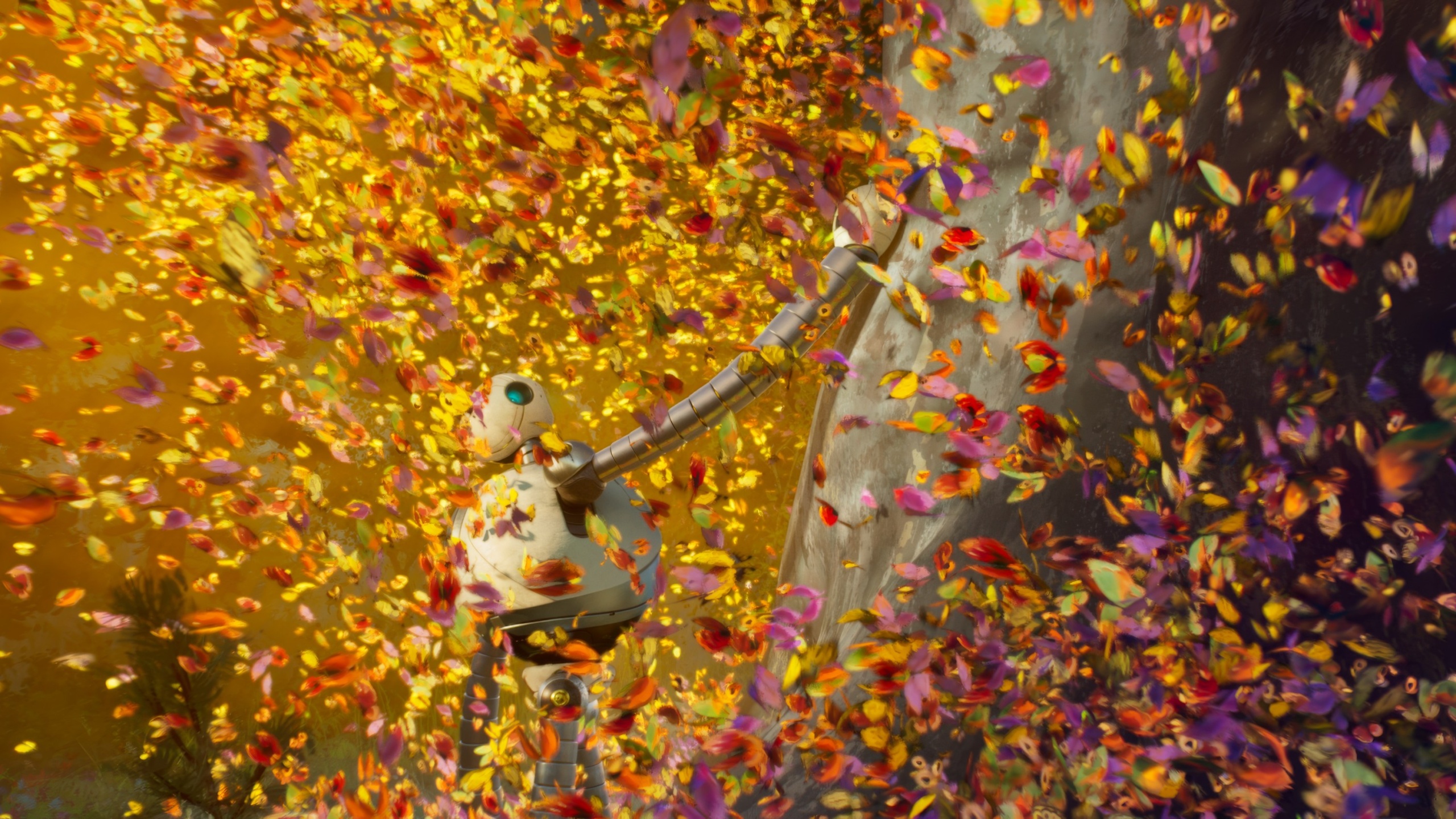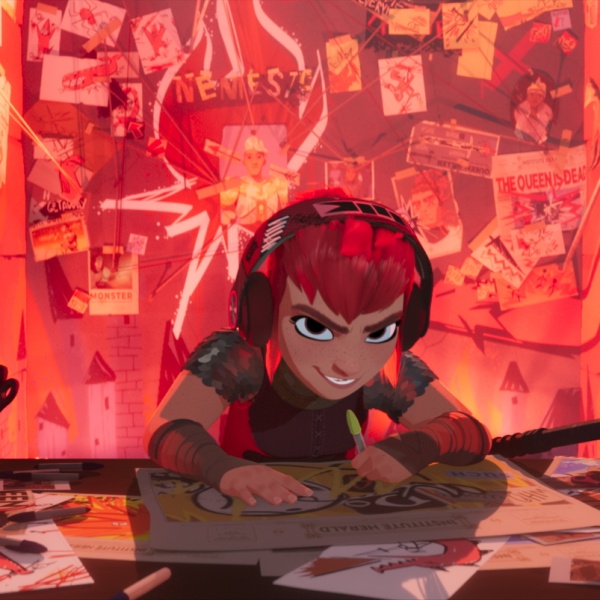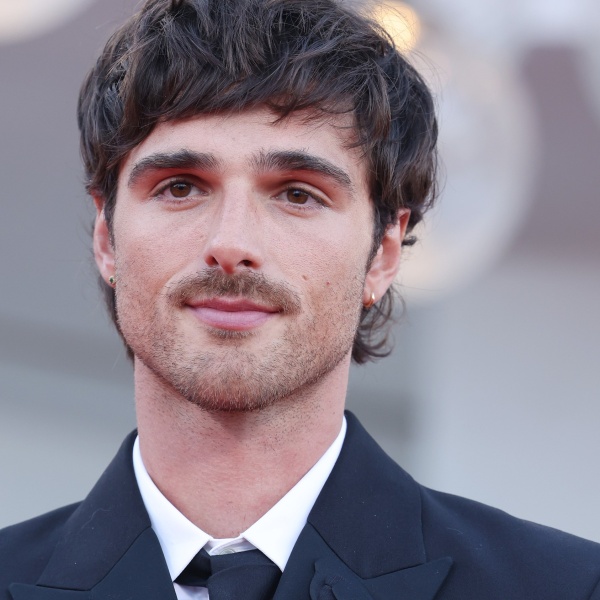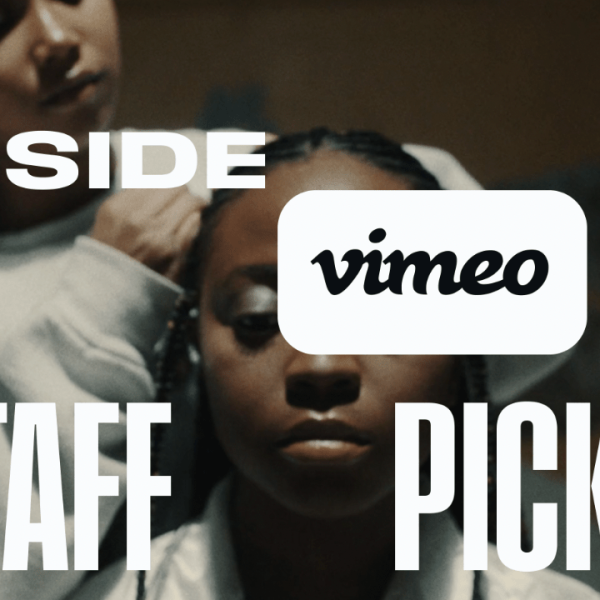After experimenting with partial 2D stylization on “The Bad Guys” and “Puss In Boots: The Last Wish,” DreamWorks Animation created a completely hand-painted impressionistic look for “The Wild Robot.” This stemmed from director Chris Sanders’ desire to translate the original artistic design from concept to final image, the result of which surprised even him when he couldn’t tell the difference during a color timing review.
The sci-fi adventure (adapted from Peter Brown’s illustrated YA novel) concerns human service robot Roz (Lupita Nyong’o) crash-landing on an uninhabited island and learning to survive among the animals in the wilderness. The iconic image of Roz being out of place became the starting point for such bold experimentation.
“Up to this point, we got all these wonderful gifts from CG, taking geometry and wrapping it up as effectively as we could to evoke reality,” Sanders told IndieWire. “But we also lost contact with that analog handmade background that was so beautiful and resonant and really just emotional.”
The artists were able to paint in 3D space to get the best of both worlds: organic beauty and dynamic camera movement. Armed with new tech, DreamWorks hand-painted all of the environments, with brushstrokes giving the illusion of geometry and detail. They also applied 2D textures and shaders to Roz and the animals with the same brushstroke technique

“DreamWorks had made these wonderful advancements in creating illustrated worlds again,” added Sanders (“How to Train Your Dragon,” “Lilo & Stitch”). “And I was asking [production designer] Raymond [Zibach] and everyone to go as far as we possibly could, to a world that felt like those soft painted worlds that inspired us to get into animation in the very first place.
“It’s a stylus instead of a brush, but that stylus is held by a human hand and our skies, our trees, everything, has been painted,” he continued. “And what we really have now is this CG robot stepping into a hand-painted world, and one of the exciting things that we did throughout the story, which was something that was very important in the book, is that the more time that Roz spends in the wild, the more her surface is changed. She gets dents and scratches, and she gets mildew and mold and little things growing on her. She very quickly also becomes a hand-painted surface. And she belongs now to the wilderness with the animals.”
There were around 30 different versions of Roz during her slow, hand-painted transformation (only her introduction to the island is fully CG), and the environments were created in layers, divided by close, medium, and long perspectives. Unlike the novel, Roz doesn’t have a mouth. She has expensive camera lenses for eyes with running data hinting at thought processing, and glowing LED lights running through the cracks on her head and upper body that pulse and change color for emotional emphasis.
For production designer Zibach (the “Kung Fu Panda” franchise), “The Wild Robot” was a welcome embrace of total 2D stylization. “After the studio made ‘Bad Guys’ and then ‘Puss in Boots,’ I was like, well, we’re getting there,” he told IndieWire. “And, with a little more push on the technology, we were really able to get even more into all those [hand-painted] touches on the characters, onto the foreground sets, the background sets.”

Zibach drew from Tyrus Wong’s legendary watercolor backgrounds in “Bambi” along with Hayao Miyazaki’s hand-drawn forests and water. “It’s a weird thing to feel like you’re coming back to what has always been great about what animation is,” he continued. “Painting the world in a way that you want everybody else to see it. You want to see it through the painter’s eyes, and to do that now with CG, I think, is not exactly groundbreaking. We’re just taking it further than others have, and it turned a lot of our departments into painters with the elements that they had to control and create and add.
“We talked about where the detail is and where it isn’t,” Zibach said. “We’ve done it with light before, where you emphasize things and de-emphasize things, but now you’re actually doing it with how much of the painted detail shows up and is defined by the light that you’re trying to create.”
Ziback worked closely with Baptiste Van Opstal, head of look, who reviewed the concept paintings and helped determine how the assets would work in CG. “He would look at the paintings and ask me all these questions, especially in environments with moving cameras and all this lush detail,” said Zibach. “So, in our department, we would break them down into small elements. We really needed to build this world out of painted elements, and he was key to being strong-willed enough to go after all that stuff that you would have to do technically and artistically to create that.”

VFX supervisor Jeff Budsberg (who was head of look on “The Bad Guys”) said the true goal of “The Wild Robot” was a return to the ’50s golden age of Disney animation, which reached its zenith with “Sleeping Beauty,” thanks to the landmark painterly look of illustrator Eyvind Earle. “There’s something endearing about feeling the artist’s hand,” he told IndieWire. “‘The Bad Guys’ was more of an homage to illustration and comic books, and ‘Puss in Boots’ was inspired by a fairy tale, so lots and lots of very ornate, elaborate detail. To be successful, you have to do the style that fits the subject matter.”
The driving impetus for Budsberg was turning Roz into a wild robot by making her look more painterly throughout the film. Brushstrokes were also applied to the animals (including Kit Connor’s Brightbill Gosling and Pedro Pascal’s Fink, the Fox) and the environments with incremental differences in the distance. As in painting, they were constantly adding and subtracting information, allowing the viewer to fill in the blanks.
This was achieved with new or improved tools for painting, lighting, and physically-based rendering in the proprietary Moonray. The advancement here was creating brushed transparency on character surfaces and in the digi-matte paintings because of the organic looks. In addition, DreamWorks introduced painterly aesthetics in compositing, which was more effective than waiting until rendering. For example, brush textures applied to Roz drove the simplification of her features and shading. It was an art-directed smear of everything with a brushstroke. This technique was applied to everything in the film.
One of the breakthrough tools, though, was Badger brush: a 3D brushstroke technique to smear/break up hard silhouette edges (an homage to 2D painting). This was also used to execute artistic depth of field. Painters do not simply blur the image as in traditional depth of field; they deconstruct/simplify the image intentionally.

“I liked to add brushed highlights on [Roz’s] metal, including a little bit of brush texture where it isn’t sharp anymore where the light rolls off,” said Budsberg. “I start manipulating the light response on her metal to be these faceted brushstrokes, painted swatches that react to light. I start distorting the paint on her body to look more brushed.
“I start introducing almost like what a painter would if you had a loaded brush that had multiple colors in it,” Budsberg continued. “You start to see that as the light rolls off, it actually shifts into hue, like another secondary color before it goes into the shadow side. I start removing lines, almost on a highlight, so you’ll see a highlight go down her arm, almost like one brush stroke that goes down. So I slowly start to introduce these things over the movie, but it’s incremental, almost imperceptible, sequence by sequence.”
For Sanders, the wonder of it all didn’t occur to him until he watched a presentation at Annecy, where an animator painted in 3D space and the DreamWorks team explained their new technique. “No one was more riveted than I was because I only understand so much of it,” he said. “I was watching a giant screen and they were painting dimensionally on a tablet, and the only way I could describe it was if I could pick up a paintbrush and paint in thin air. It was something like out of the golden days of Disney when they were producing magic.”





